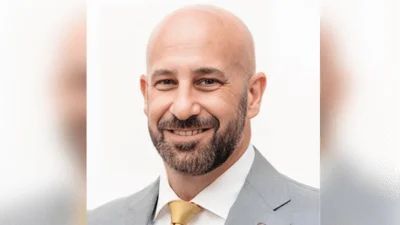Mark A. Mone Chancellor | Official website
Mark A. Mone Chancellor | Official website
The UWM Research Foundation has awarded $250,000 in Catalyst Grants to fund several innovative projects. These include identifying proteins for new drugs to treat triple-negative breast cancer, developing improved materials for solar cells, and creating a threat-modeling system to enhance cybersecurity in manufacturing.
The Catalyst Grant program aims to seed-fund research where the University of Wisconsin-Milwaukee (UWM) can significantly impact the regional economy through commercialization. The Lynde and Harry Bradley Foundation has supported the program since 2007. This year, Invenergy has also provided support specifically for clean energy research.
Since its inception, the Catalyst Grant program has allocated $6 million to projects that have resulted in 18 UWM startup companies. Other donors over the years include Rockwell Automation Charitable Corporation, Richard and Ethel Herzfeld Foundation, GE HealthCare, and Clarios.
To date, this investment has led to 66 issued patents, 50 pending patents, 30 license/option agreements, and more than $40.7 million in follow-on funding.
This year’s grants have been awarded to the following projects:
Identifying breast cancer-fighting proteins from healthy cells:
Qingsu Cheng from biomedical engineering is investigating proteins naturally secreted by human cells that inhibit the growth of triple-negative breast cancer cells. Using organoids derived from real patient tumors, Cheng aims to identify proteins that can be developed into small-molecule drugs as a cost-effective treatment for this aggressive cancer.
Developing low-cost materials for better solar panels:
Nikolai Kouklin from materials science & engineering and Konstantin Sobolev from civil & environmental engineering are working on a cost-effective and scalable alternative material for solar cells and other optoelectronic devices using zinc oxide phosphate films. Their goal is to enhance efficiency and environmental sustainability while overcoming challenges associated with current materials.
Improving cybersecurity for advanced manufacturing:
Zhen Zeng from computer science plans to create a threat-modeling system designed to enhance cybersecurity in complex advanced manufacturing systems. By automating repetitive tasks and integrating threat intelligence, this large language model-assisted tool seeks to significantly reduce time and effort required for threat modeling.
A device to safely test anchors in concrete structures:
Jian Zhao from civil & environmental engineering and Nathan Salowitz from mechanical engineering are developing a “smart cap nut” that generates and measures micro-vibrations to detect defects at the adhesive-concrete interface that are often not visible. This innovation addresses issues related to improper installation or aging of metal anchors used in concrete structures.
Advanced computer modeling to find new treatments for skin disease and leukemia:
Arjun Saha from chemistry is targeting abnormal protein-protein interactions (PPIs) which are behind many diseases by developing new computational methods combining machine-learning algorithms with quantum chemistry and molecular dynamics. This comprehensive software solution aims at examining PPIs could pave the way for novel therapeutics.






 Alerts Sign-up
Alerts Sign-up